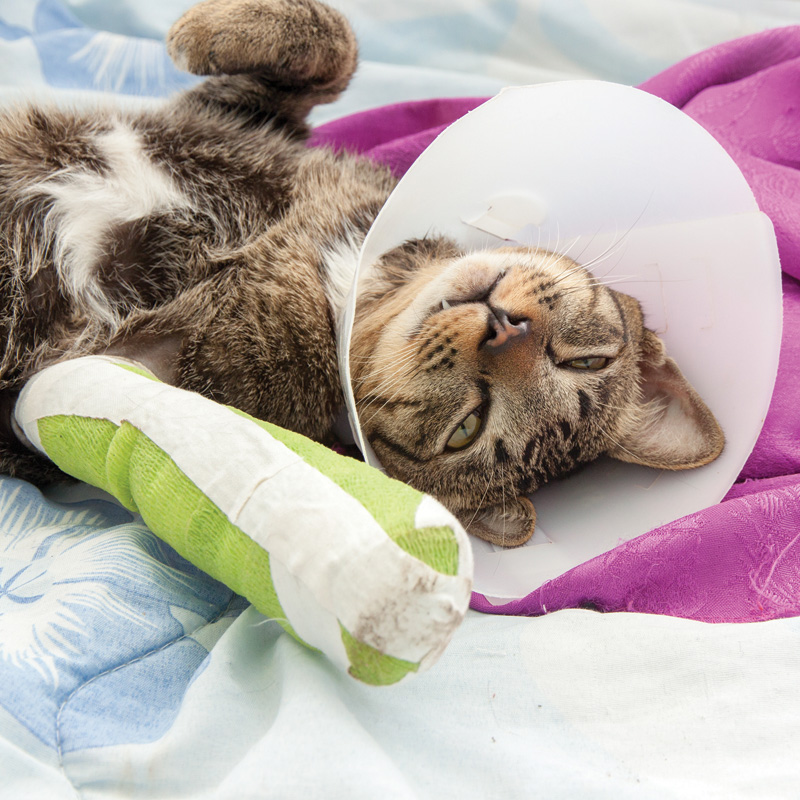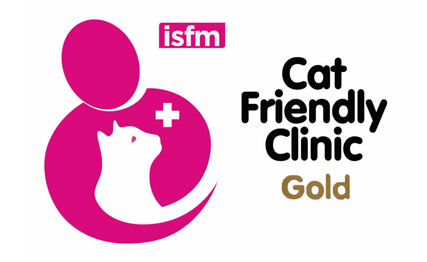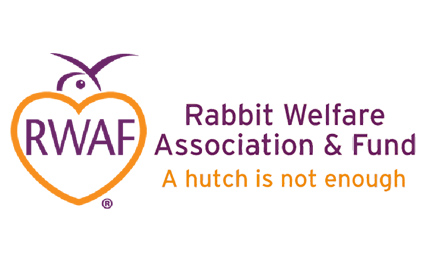24 hour contact: 020 7387 8134
First Aid Guide for Your Pet
The RVC First Aid Guide for pet owners is an aid for emergency situations, but is not intended to replace veterinary advice that is specific to your pet.

If you have any concerns regarding your pet, it is best to speak to a veterinary practice as soon as possible.
The First Aid Guide for Your Pet leaflet was produced with the help of the RVC’s charity, the Animal Care Trust (ACT). The ACT raises funds to support projects across the RVC aiming to improve and develop veterinary medicine. We work very closely with the RVC’s hospitals, making sure they have the best, most up-to-date equipment possible. We also organise events like Pet First Aid Days to help people understand first aid for their pets to try to ensure the best possible outcomes
There are all sorts of ways you can help us support the advancement of veterinary medicine from simply donating to taking part in events and challenges. To learn more, or to sign up to our newsletter, see RVC Animal Care Trust, call us on 01707 666237 or e-mail act@rvc.ac.uk.
What to do if...
Your pet is bleeding
- Gently feel over your pet with clean hands and try to see where the blood is coming from
- If there is an obvious wound, then put firm pressure over it with a clean tea towel, towel or bandaging material
- Try to keep your pet calm
- Call the vet and give them details of what you have found
- Transport your pet to your vet practice for full assessment if recommended to do so. If possible, bring someone to look after the pet whilst it is in transit
Your pet has been hit by a vehicle
Stay safe, only go to your pet if you are not endangering yourself or others.
Any vet will see you in an emergency, even if you are not registered with them.
- Check your pet is breathing and assess for any wounds
- If your pet is in pain, they might bite when moved, so take care
- Ask for help: you may need other people to stop traffic or make phone calls for you
- Gently move your pet out of the road. Use a blanket or towel or the parcel shelf of a car
- Ring your vets or the nearest vet practice and let them know when your pet was hit, what injuries you can see and when you will arrive. If you cannot safely move your pet, ask the vet for advice
- Go immediately to a vet practice, even if you cannot see any obvious injuries, internal injuries can be present and can be very serious
Your pet collapses
There are many possible causes of collapse including heart and breathing problems, and exposure to toxins.
You should:
- Call your pet’s name and see if they respond to you
- If they do not respond and are paddling (moving their paws randomly) they may be having a seizure/fit (see panel below)
- Check whether your pet is breathing normally
- Let your vet know you are coming.
- Check whether your pet is having breathing problems and if it is responding to you
- If your pet cannot stand, they should be taken to the vet immediately
- Keep your pet calm and warm (cover with a blanket) on the journey
Your pet has a fracture/broken bone
If your pet has a swollen limb, a limb that looks abnormal or is suddenly very lame, they may have broken a bone.
- Take them to a vet practice immediately (ringing first if possible)
- Do not give your pet any painkillers that you may have at home (human nor animal)
- Do not try and splint or bandage the limb, this could be very painful
- Be aware that a pet in pain, even a very loving one, may bite
Your pet is having a seizure/fit
If they are paddling (moving their paws randomly) and don’t respond, they may be having a seizure.
- Call your pet’s name and see if they respond to you
- Filming a seizure and noting how long it lasts can be useful for your vet
- You do not need to hold a seizuring animal or prevent them biting their tongue
- Clear the area they are in and wait until the seizure finishes
- If it does not finish after two minutes your pet should be taken to a vet practice immediately
- After the seizure has stopped, keep your pet quiet and ring your vet for advice
- Your pet may want to move around which is normal. Be aware that they may be disorientated and/or blind so try to keep them contained in a clear and safe area
Your pet is not breathing
- Call for help
- Get another person to call your vet or a nearby vet practice
- It is important to get your pet to your vet practice or an emergency vet as soon as possible so they can help your pet
- Call your pet’s name and stroke them firmly
- Check your pet’s airway for obstructions
- If there is no response carefully look at them for 10 seconds to check they have not taken a breath
- You can try administering a breath into your pet’s nostrils while holding their mouth closed. Sadly, this is very unlikely to be successful.
Your pet has been bitten
Often animals are bite victims – either from another pet or from a wild animal such as a fox. Wounded animals can be aggressive so proceed with extra care.
If a fight is on-going then do not try to separate the animals physically as you may well get bitten. You should instead:
- Shout as a distraction
- Pour/hose cold water on the animals
Once the fight has stopped:
- Carefully examine and feel your pet to see if they have any wounds
- If they are bleeding see panel above
- Transport your pet to the nearest vet practice immediately for assessment as some injuries may not be externally obvious
Your pet has been bitten by a snake or stung by an insect
Often you just hear your pet cry out suddenly or be unaware of the original incident occurring at all. You may notice swelling of your pet’s face or limb or that your pet is suddenly lame.
- If you see the snake or insect, try to take a photo or remember what it looked like for identification
- Do not try to apply a tourniquet to an affected limb
- Do not attempt to remove a sting yourself
- Be aware that a pet in pain, even a very loving one, may bite
- Contact your vet as soon as possible for advice
Your pet has been burned
The most common forms of burn suffered by pets are water scalds, burns from fire (debris from open fire) or household appliances.
- Move the pet safely away from the heat source
- If your pet has been exposed to:
- scalding water
- heat source
- strong sunshine (i.e. sunburn)
- If a chemical burn is suspected e.g. due to kitchen/ bathroom products, then ring your vet practice for advice as how to manage this will depend on the product
- If it is advised that you should flush the product off the skin with water, then take care not to allow any product to splash into your pet’s eyes
Preventing sunburn
Animals can also get sunburnt – particularly those with white fur. If your pet is at risk, it is best to apply animal sun cream.
Your pet has become impaled
If your pet runs onto, or falls onto, an object such as a fence or a stick, they can become impaled on it.
- If your pet has some foreign material sticking out of them, such as a stick, do not remove this
- If they cannot be moved without removing the foreign material then be prepared for them to bleed when it is removed (see panel above if "Your pet is bleeding")
- Transport them to the nearest vet practice immediately for full assessment
Your pet is suffering from heat exposure
Pets can suffer from heatstroke after being trapped in a hot place, such as a car, or having exercised in hot weather, particularly if they are not used to this.
- If you suspect heatstroke, move your pet to a cool place
- If you have a fan or air conditioning, use these or wet your pet with cool water
- Call your vet practice and follow their advice on how to cool your pet
- If you have a thermometer, check your pet’s temperature. Most dogs and cats have a rectal temperature of 37.8-38.7°C
- Transport your pet to your vet practice as soon as possible if advised to do so
- Use the air conditioning or open the car windows during transportation
Your pet is suffering from cold exposure
Many pets will cope well with cold weather.
- If your pet feels cold to the touch, wrap them in a blanket during transport and make sure the ambient temperature is warm, but do not try to actively heat them up
- If your pet shows any sign of lethargy, they should be taken to your vet practice immediately for full assessment.
Your pet has eaten something toxic
If you are unsure if something your pet has eaten is toxic, ring your vet practice
If they advise the product is toxic, you will need to attend the practice immediately
Note the time your pet ate the toxin, the amount/ quantity of toxin if known, and also take any packaging you have
If your pet is sick, try to see if any of the toxic product is in the vomit
Common causes of poisoning
- Raisins
- Grapes
- Chocolate
- Lily flowers (cats)
- Garlic
- Onion
- Paracetamol
- Ibruprofen
- Slug bait
- Rat bait
- Anti-freeze
- Mouldy food
- Xylotol sweetner (often found in sweets or chewing gum)
Your pet has eaten a non-food item
- Check your pet is breathing and is not choking on the item
- Call your vet practice immediately for advice
- Depending on the size and material of the object ingested, they may advise that you come to the practice to make your pet sick to prevent it causing an obstruction or another problem
- Do not try to make your pet sick at home



